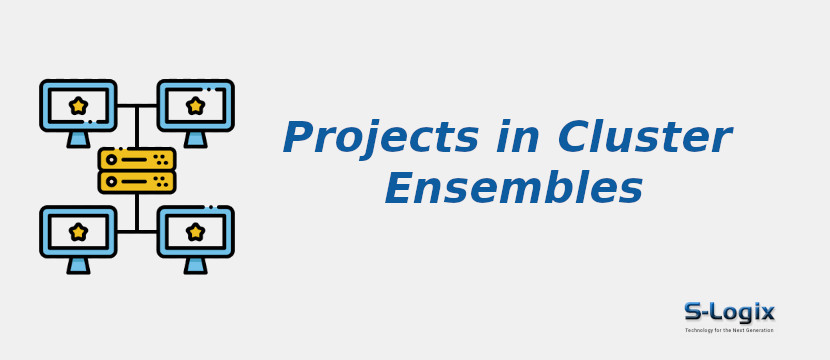Project Background:
The Cluster Ensembles originate from recognizing the limitations of individual clustering algorithms in accurately partitioning complex datasets and the need to leverage the diversity of multiple clustering solutions to improve overall clustering quality. Traditional clustering methods often produce varied results due to their sensitivity to initialization, parameter settings, and inherent randomness. Cluster Ensembles aim to address this issue by combining the results of multiple clustering algorithms or clustering to obtain a more stable and robust clustering solution. Harnessing the complementary information captured by different clustering approaches can mitigate the weaknesses of individual algorithms and enhance the overall clustering accuracy, robustness, and stability.
The project acknowledges the challenges posed by traditional clustering methods and the potential of ensemble-based approaches to overcome the challenges by integrating diverse clustering solutions. It may include exploring theoretical foundations, algorithmic frameworks, and practical applications of Cluster Ensembles in various domains, including data mining, pattern recognition, and machine learning.
Problem Statement
- Traditional clustering algorithms exhibit variability in their results due to sensitivity to initialization, parameter settings, and randomization, leading to inconsistencies in cluster assignments.
- Individual clustering solutions may be sensitive to noise, outliers, and data perturbations, resulting in unstable and unreliable clustering results.
- Clustering algorithms may struggle to generalize well across different datasets or data distributions, leading to suboptimal performance in diverse real-world scenarios.
- Combining results from multiple clustering algorithms poses challenges in interpreting and understanding the final clustering solution, particularly in cases where the individual algorithms produce conflicting cluster assignments.
- Integrating multiple clustering solutions into an ensemble may incur computational overhead and scalability issues, particularly for large-scale or high-dimensional datasets.
-
Effective aggregation of multiple clustering solutions into a single ensemble solution requires techniques for consensus building that can reconcile differences and disagreements among individual clustering results.
Aim and Objectives
- To improve clustering accuracy, robustness, and stability by integrating diverse clustering solutions using Cluster Ensembles.
- Develop techniques for combining multiple clustering algorithms to obtain a more stable and robust clustering solution.
- Enhance clustering accuracy by leveraging the complementary information captured by different clustering approaches.
-
Address the variability and sensitivity of individual clustering algorithms by aggregating their results into a consensus clustering solution.
- Explore methods for interpreting and understanding the final clustering solution produced by Cluster Ensembles.
-
Evaluate the effectiveness of Cluster Ensemble techniques on diverse datasets and real-world applications.
Contributions to Cluster Ensembles
- Development of techniques for combining multiple clustering algorithms to improve clustering accuracy, robustness, and stability.
-
Advancement of methods for consensus building to reconcile differences and disagreements among individual clustering results.
-
Exploration of approaches for interpreting and understanding the final clustering solution produced by Cluster Ensembles.
-
Enhancement of clustering performance by leveraging the complementary information captured by different clustering approaches.
-
Evaluation of the effectiveness of Cluster Ensemble techniques on diverse datasets and real-world applications.
Deep Learning Algorithms for Cluster Ensembles
- Deep Embedded Clustering Ensemble (DECEnsemble)
-
Variational Autoencoder Clustering Ensemble (VAEEnsemble)
-
Graph Convolutional Network Clustering Ensemble (GCNEnsemble)
-
Adversarial Autoencoder Clustering Ensemble (AAEEnsemble)
-
Recurrent Neural Network Clustering Ensemble (RNNEnsemble)
-
Generative Adversarial Network Clustering Ensemble (GANEnsemble)
-
Self-Organizing Map Clustering Ensemble (SOMEnsemble)
-
Convolutional Autoencoder Clustering Ensemble (CAEEnsemble)
-
Temporal Convolutional Network Clustering Ensemble (TCNEnsemble)
-
Transformer Clustering Ensemble (TransEnsemble)
Datasets for Cluster Ensembles
- Iris
-
Wine
-
Breast Cancer
-
MNIST
-
CIFAR-10
-
Fashion-MNIST
-
COCO (Common Objects in Context)
-
LSUN (Large-Scale Scene Understanding)
-
LFW (Labeled Faces in the Wild)
-
CelebA
Software Tools and Technologies
Operating System: Ubuntu 18.04 LTS 64bit / Windows 10
Development Tools: Anaconda3, Spyder 5.0, Jupyter Notebook
Language Version: Python 3.9
Python Libraries:
1.Python ML Libraries:
- Scikit-Learn
- Numpy
- Pandas
- Matplotlib
- Seaborn
- Docker
- MLflow
2.Deep Learning Frameworks:
- Keras
- TensorFlow
- PyTorch
